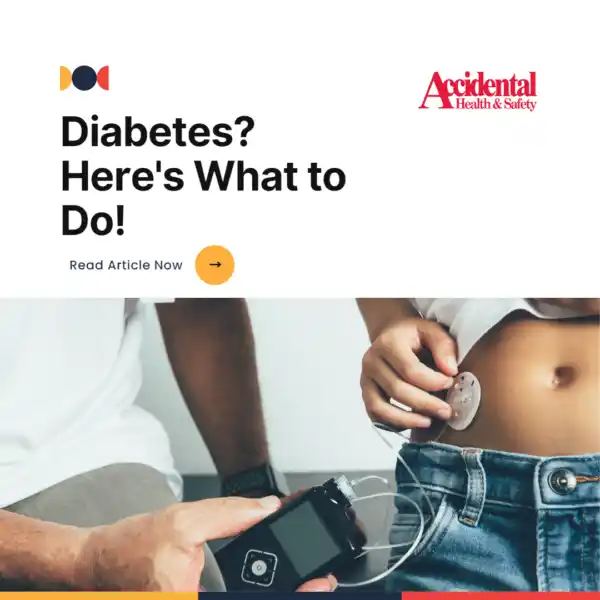Training and Assessment Delivered on Behalf of Allens Training Pty Ltd RTO 90909
Diabetes? Here’s What To Do!

Diabetes is a complicated disease and can have a great impact on someone’s life. If you’ve got a family member, friend or colleague, it’s important to be ready to help them.
Of course many people who have diabetes know their condition and what they need to do to control their blood sugar level. So we won’t talk about that in this article. Our focus will be learning what to do in those emergency situations where they are unable to care for the situation themselves, or when they need an extra hand.
So there are two types of diabetic emergencies. low blood sugar (hypoglycemia) and high blood sugar (hyperglycemia). Let’s learn more about them
Hypoglycemia Diabetes
Ok, so when a person has low blood sugar, what would you expect to see? Their symptoms might include dizziness, faintness, weakness and a lack of concentration. They may be hungry and their mood could change. A person can become sweaty, shake or have a rapid pulse.
So what can you do to help? It’s time to get some more sugar into their system. You can do this by giving glucose tablets, glucose gel, or a high energy food such as sugar, honey, or a can of sugary soft-drink. (Important reminder- no diet soft drink, no sugar = no recovery)

Through the next 15 minutes the person should make a recovery, and then it’s important to give them more food to stabilise their glucose levels. A meal, a sandwich, pasta. something preferably with carbs will make a huge difference.
Now while this will help, at time’s a persons diabetic emergency will progress to the point where they can’t follow your instructions and they can’t swallow. In some cases their diabetes could lead them to have a fit or seizure, and/or become unresponsive or unconscious.
What a tough situation. How can you help if they can’t swallow? Well, you can call emergency services. Dial 000 immediately and say “diabetic emergency” and follow their instructions.
What else can you do? Some people are trained to perform a “glucagon injection” to help restore the persons blood sugar level. It’s rare for these to be handy, but if someone in your workplace, school, or family has a history of diabetes, they may have one of these handy. How do you use them? Here’s a great video from Leeds Hospital in the UK. Of course, as you do this emergency services will be coaching you through.
Hyperglycemia Diabetes
Low blood sugar (hypoglycemia) is probably the most common situation you’ll face regarding diabetes as a first aider, but it’s still important to talk about high blood sugar (hyperglycemia) and what to do.
Ok, so if a person has high blood sugar, what would you expect to see? Here are some common symptoms: excessive thirst; frequent urination; dry skin and mouth, with sunken eyes (signs of dehydration); recent weight loss; rapid pulse; nausea and vomiting; abdominal pain; rapid breathing; fruity sweet smell of acetone on the breath (similar to paint thinner or nail polish remover); and confusion, a deteriorating level of consciousness, or unresponsiveness.
What can you do to help? You can assist the person to follow their diabetes management plan, or if they don’t have one, help them get assessed by a healthcare professional. Although rare, a person may become unconscious. In that case follow the DRSABCD action plan, which you can read about in our ultimate guide.

Here’s a little problem though. Would you agree that at times it may be easy to confuse the symptoms of high and low blood sugar. Confusion, rapid pulse, and being unresponsive are symptoms of both hypo and hyperglycemia.
At times, you may have a glucometer handy to check their blood sugar levels. But what if you don’t? Here’s a hot tip. Australian guidelines recommend treating the situation as a low blood sugar emergency. Why is that? Well, if you treat a person for low blood sugar, they will improve quickly, generally within 15 minutes. If they improve, you know they had low sugar, but if they don’t improve? Well then you know they have high blood sugar. Giving them extra sugar while they have high blood sugar is unlikely to do any lasting damage, so it was fine for you to give them the sugar previously.
Wrap Up
Well, that’s about it for emergency diabetes management. We hope this article has helped you to know what to do in an emergency, and that you can use it to help a friend, family member or colleague should the need arrive!
We’d love to help you get first aid confident in more than just diabetes, why not book one of our courses today! You’ll find our training hands-on, practical and interesting!


